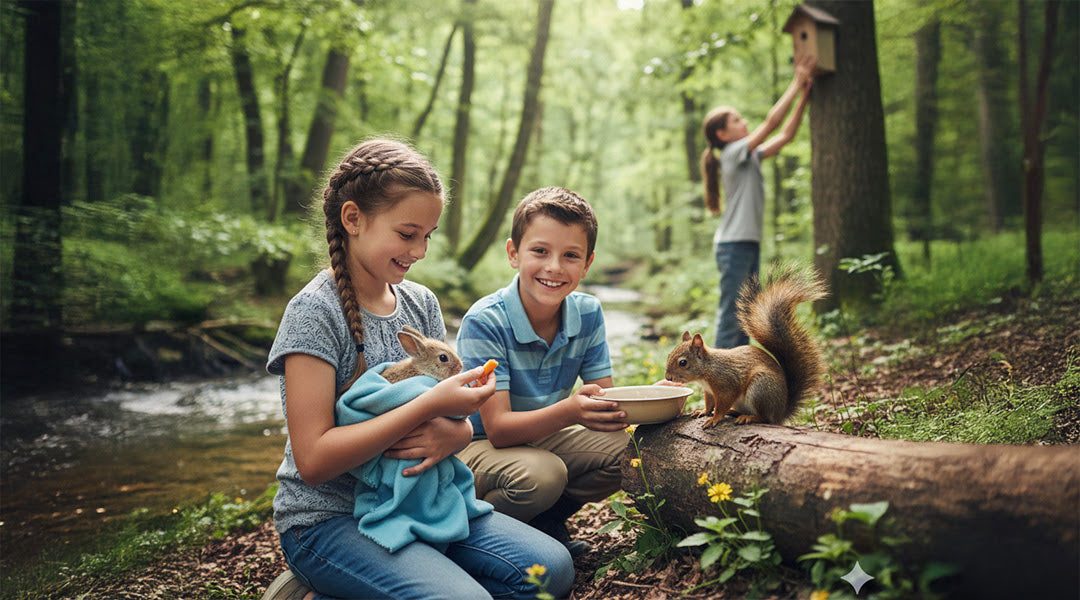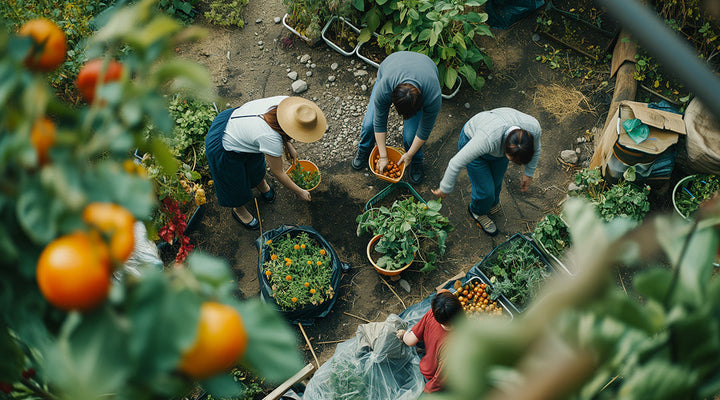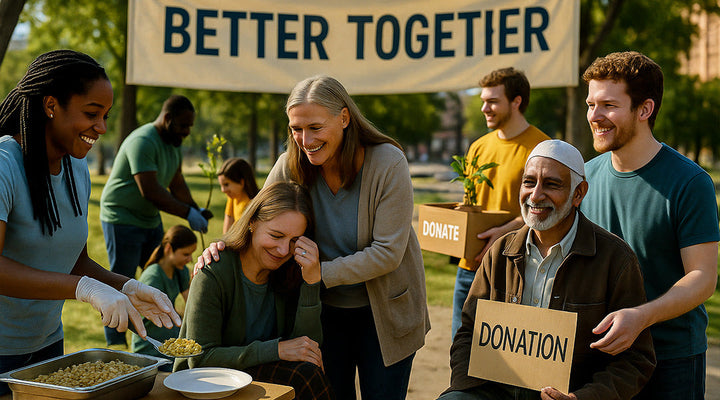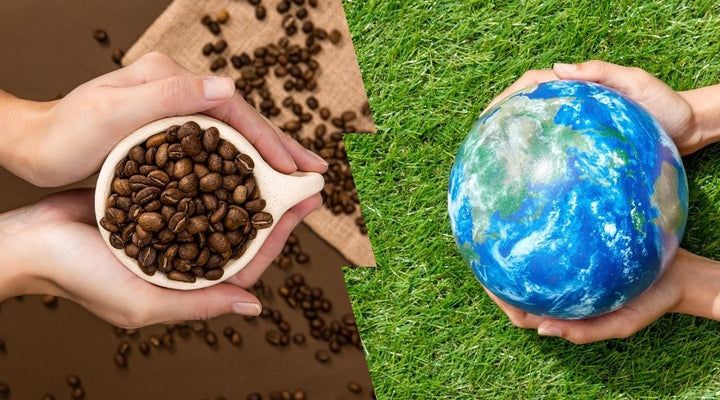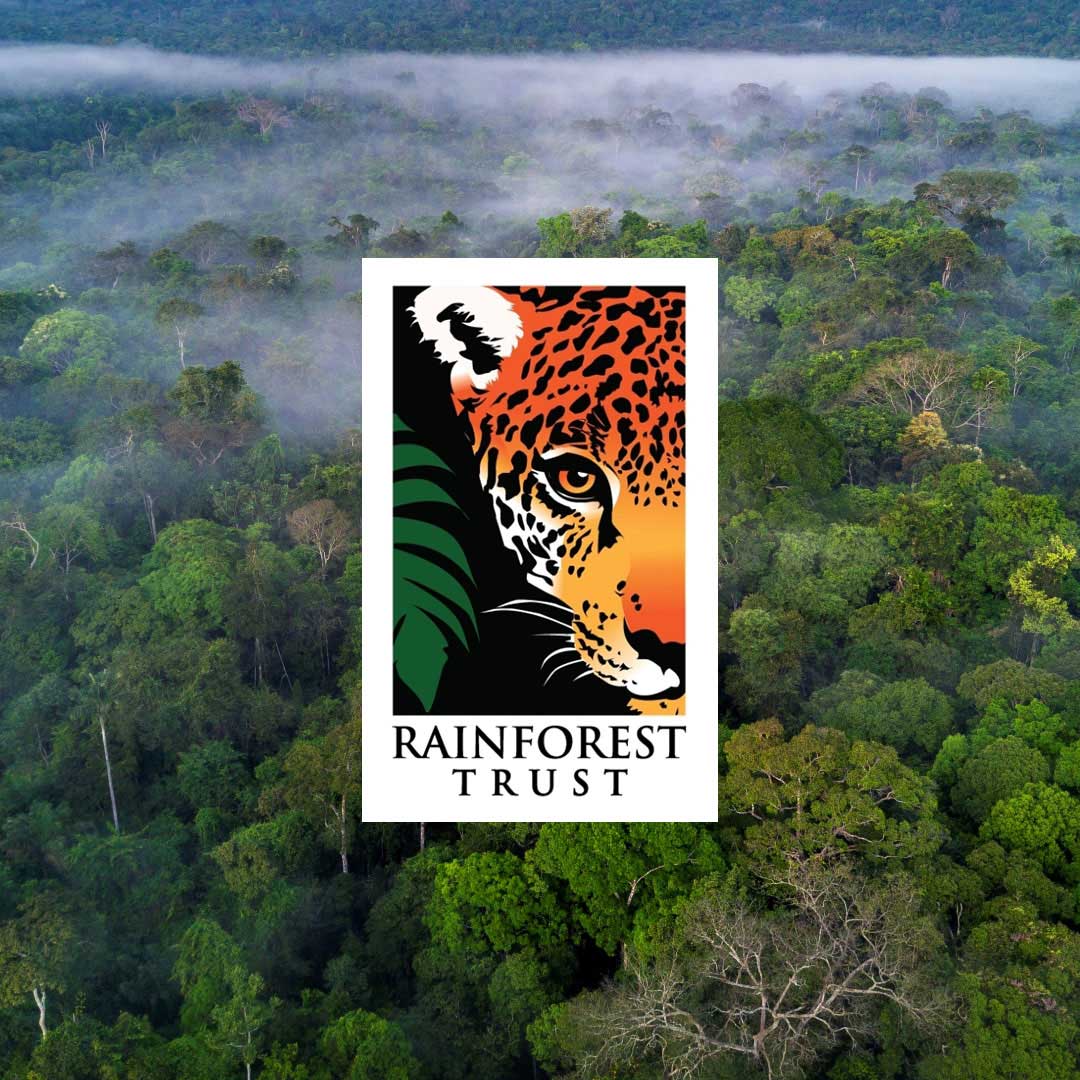
Rainforest Trust - Why This Partnership Means Everything To Our People, Our Product, And Our Planet
Here At Lifeboost we believe in supporting causes and organizations that line up with what we believe.
- This is why we’ve partnered with charities in Africa, supporting the women, schools, children, wildlife, and much more throughout the regions where our coffee is grown.
- This is why we’ve partnered with organizations building schools in the communities where our coffee farmers live in Nicaragua.
- This is why we support the first responders within our own community.
- And, this is why we support the Rainforest Trust.
Here, we’d like to highlight that partnership, exploring exactly what the Rainforest Trust is, why we support them, and how their work impacts our world as a whole as well as our coffee plants and the environment where they’re grown.
What is the Rainforest Trust?
The Rainforest Trust is an organization that “saves endangered wildlife and protects our planet by creating rainforest reserves through partnerships, community engagement, and donor support.”
The rainforests and tropical habitats protected by the Rainforest Trust are home to the greatest concentration of endangered species in the world.
Their unique model has been successful now for more than 30 years, as they, their partners, as well as participating local communities have protected private reserves, national parks, community forests, and indigenous land titles.
Some of the areas where the Rainforest Trust efforts are concentrated include conservation hotspots, such as the Amazon Basin, the Congo Basin, Indonesia, Madagascar, avian superhighways (known as flyways) where migrating birds rest and refuel, as well as mangrove forests.
The three areas primarily impacted by the work of the Rainforest Trust are plant and animal species, climate, and indigenous people.
With our planet’s rainforests providing a home for nearly 50% of the world’s biodiversity, through these areas of focus, the Rainforest Trust has protected more than 42.7 million acres of tropical habitats across the globe.
By protecting the ecosystems they depend on for survival, 2,319 critically endangered, endangered, and vulnerable species have been saved from extinction.
Of those rainforest regions protected through the Rainforest Trust since 1988, 99% of them remain intact today.  Other than partnerships and donor help, the Rainforest Trust is also a member of the Key Biodiversity Areas Partnership, ensuring they have a contributing voice in guiding such agencies as they seek to identify locations around the world which contribute the most to the global persistence of biodiversity.
Other than partnerships and donor help, the Rainforest Trust is also a member of the Key Biodiversity Areas Partnership, ensuring they have a contributing voice in guiding such agencies as they seek to identify locations around the world which contribute the most to the global persistence of biodiversity.
And, perhaps it goes without saying, but the input of the Rainforest Trust here is to keep such efforts where they’re direly needed, in our world’s rainforests and tropics.
Concerning climate, the deforestation of rainforests is a massive contributor to climate change.
Our rainforests keep carbon safely stored in the soil and in wooded plants while removing excess CO2 equivalents from the air.
This is a known fact worldover, yet tropical deforestation still occurs, making it the third largest emitter of greenhouse gasses.
Protecting these areas is likely one of the most cost-effective ways to combat climate change, with a price tag of as little as $5-10 per acre being required to protect against deforestation.
And, while the Rainforest Trust’s partnerships and donors play a huge role in making their conservation efforts possible, the indigenous people, those living in the areas the organization seeks to preserve, are truly the hands of this operation.
According to the Trust, “indigenous people steward three quarters of the world’s remaining biodiversity.”
And, many of their projects work with such people to help support this stewardship, securing ownership and land/resource management for locals. (No Rainforest Trust project proceeds without the freely given, prior, fully informed consent of those indigenous to the region.)
How does this play out? These local communities sustainably manage millions of acres of rainforest, their partnership with the Trust securing legal land ownership for them, which establishes natural protected areas.
How does this play out on our coffee farms? This is where Lifeboost’s partnership with the Rainforest Trust gets personal…
Where Lifeboost Coffee Meets the Rainforest Trust

So, why do we partner with the Rainforest Trust?
Simple. We believe in supporting our farmers, their families, and their communities. And, we believe in supporting the environment and wildlife where our coffee is grown.
Our coffee farmers are the indigenous people referred to above. Our coffee farms are located in some of those reserves protected by the Rainforest Trust.
Specifically, while we now have some varieties of coffee grown in Africa and a few other select regions, the bulk of our coffee is grown in the Bosawas Reserve, including Mt. Kilambe, in Nicaragua.
That clean, healthy, delicious coffee that we love so much? We wouldn’t call that a happy little accident by any means, as our methods are intentional. But, that coffee is just the byproduct of properly caring for the land where it’s grown.
How?
We only incorporate sustainable farming methods.
This means that we don’t deforest rainforest regions (or any other regions) simply to grow coffee.
Coffee is one of the most enjoyed beverages in the world, and many companies mass produce coffee just to keep up with demand. To do this, entire forest (oftentimes rainforest) regions are cleared to farm coffee plants.
This practice robs animal, bird, and insect species of their homes.
This practice robs these regions presently, and in the future, as it causes the emission of greenhouse gasses, ultimately contributing to climate change. Lifeboost coffee, as opposed to mass produced coffee, is farmed on small plantations high in the mountains of Nicaragua. Here, not only do our farmers not practice deforestation, they actually use the native plant life in an advantageous way.
Lifeboost coffee, as opposed to mass produced coffee, is farmed on small plantations high in the mountains of Nicaragua. Here, not only do our farmers not practice deforestation, they actually use the native plant life in an advantageous way.
The trees and plants growing in the areas where our coffee plants thrive, they all work together, each enriching the soil for the other, each attracting native insect, bird, and small animal life which in turn offers pollination and further soil enrichment.
The coffee plants, specifically, benefit from the shade canopy provided by the trees above, allowing our coffee to grow in a cool environment at a slower pace, which increases the overall nutrient content of the coffee cherries.
But for a moment, let’s go back to mass produced coffee.
Sadly another woe here is that the quick turnaround needed for these crops also means the plants typically require the use of environmentally destructive chemicals like pesticides and fertilizers.
These chemicals pollute the soil, air, and surrounding water, further destroying these growing regions and the surrounding environments and wildlife.
As we farm our coffee sustainably, this also means we never incorporate the use of chemicals in our growing process (or any other part of our process for that matter).
We not only believe such practices to be detrimental to our health and the health of our planet, but we also don’t find the use of them necessary, as the plant, insect, and animal life in the regions where our coffee is grown work to keep harmful pests away and fertilize our plants.
To rephrase and emphasize this beautiful practice: little intervention is needed when sustainably growing coffee.
The birds, insects, and other wildlife native to the region act as natural pest control.
Then, this same wildlife, through natural processes, helps to fertilize our coffee plants and other plant life in the region. See…beautiful!  So, if we haven’t made this point clear, allow us to zero in on the following to conclude:
So, if we haven’t made this point clear, allow us to zero in on the following to conclude:
- Protecting and preserving our planet involves protecting its land, its wildlife, and the people living on it.
- As we support our coffee farmers, as they support the environment and wildlife in the regions where they grow the coffee, we intentionally align with the mission of the Rainforest Trust.
- Then, we partner with the Trust financially, as we desire to contribute to their global cause.
- We also align with the Rainforest Trust in practice as our coffee is sustainably grown in rainforest regions where it both benefits from and contributes to the environment, these practices not only bringing you delicious, clean, healthy coffee, but continuing to protect the regions where our coffee is grown for centuries to come.
Disclaimer: Beginning in 2025, Lifeboost Coffee primarily sources our coffee from farms in Honduras. Our practices of fair wages, sustainable growing methods-from shade to zero chemicals-all are still a part of our operations and are key to what makes our coffee health, delicious, and ethical. Only our farming locations have changed so that we can continue these ethical practices while also meeting our customer demands.
- https://www.rainforesttrust.org/
- https://www.lse.ac.uk/granthaminstitute/explainers/whats-redd-and-will-it-help-tackle-climate-change/#
- https://www.nationalgeographic.org/activity/ecological-relationships/#
- References for the article to confirm data and information.




